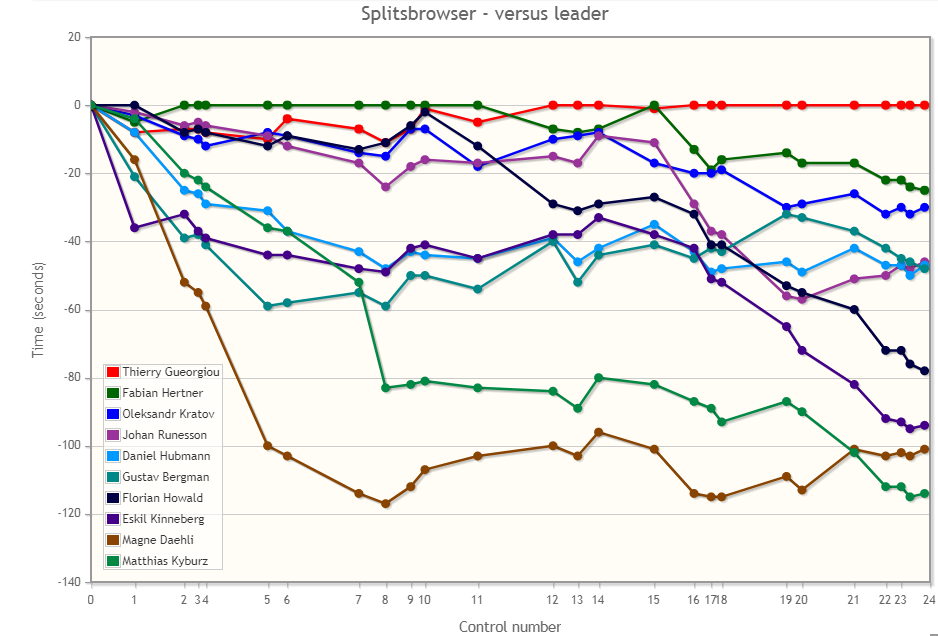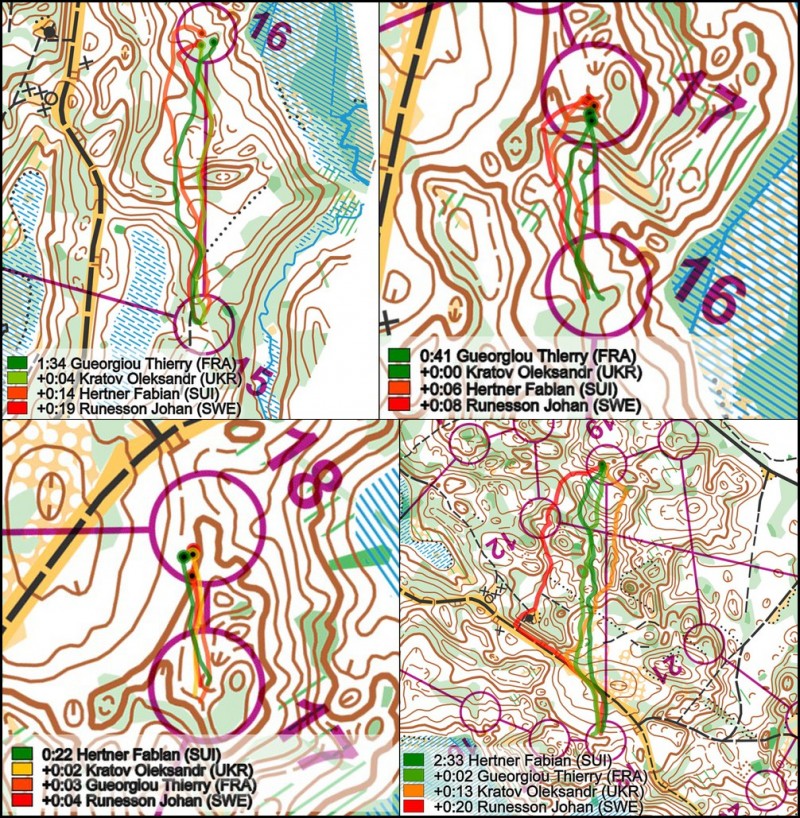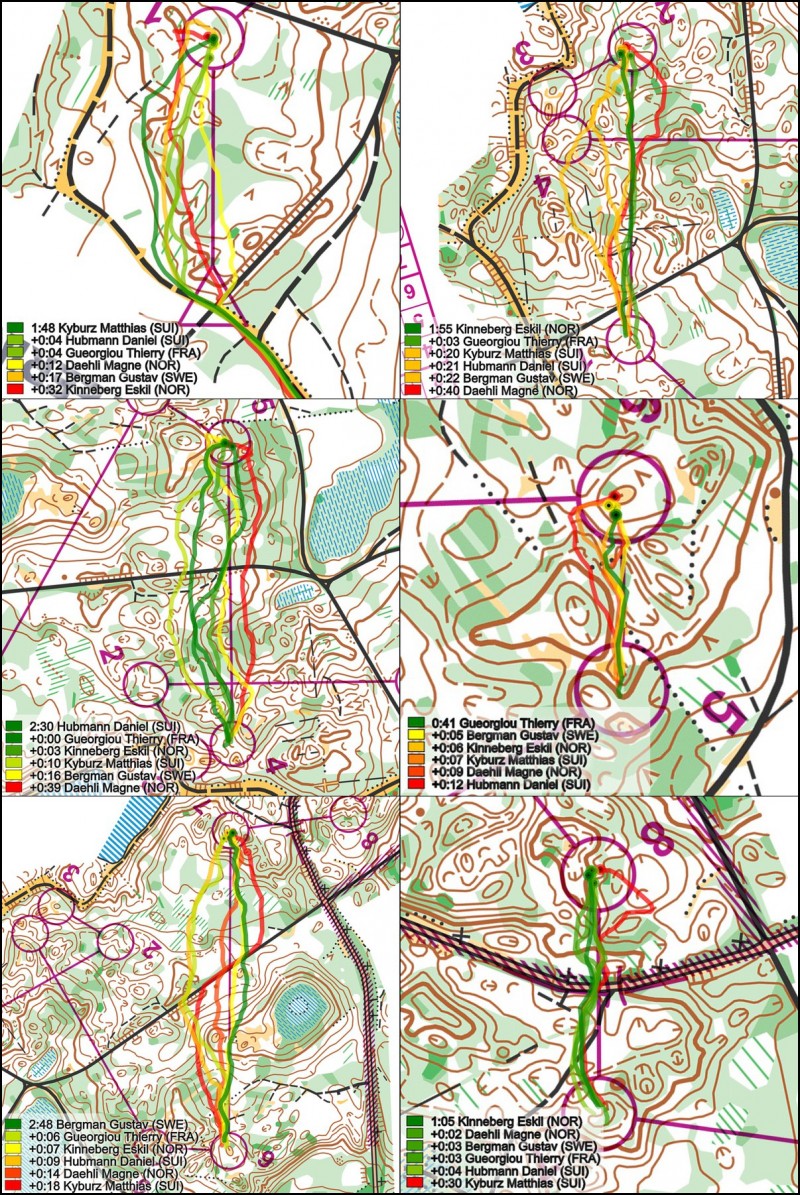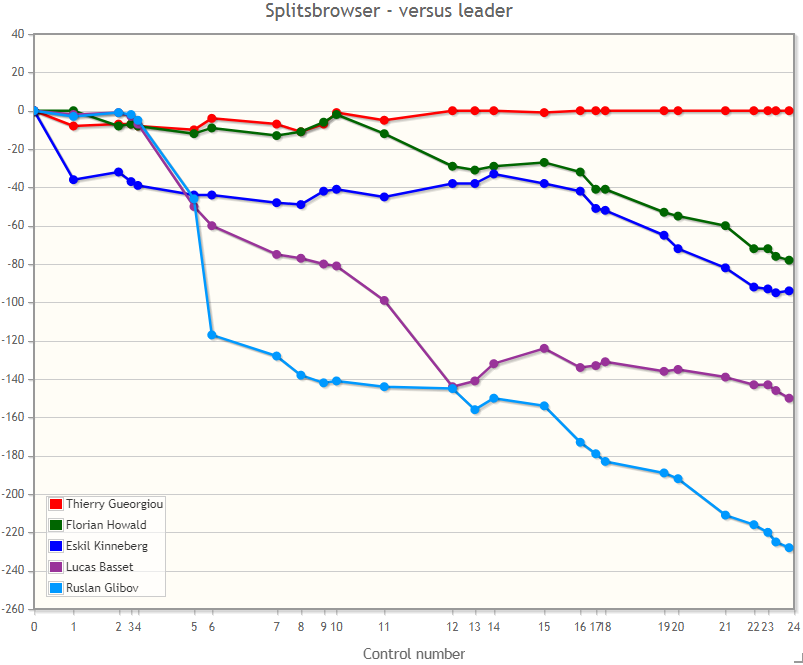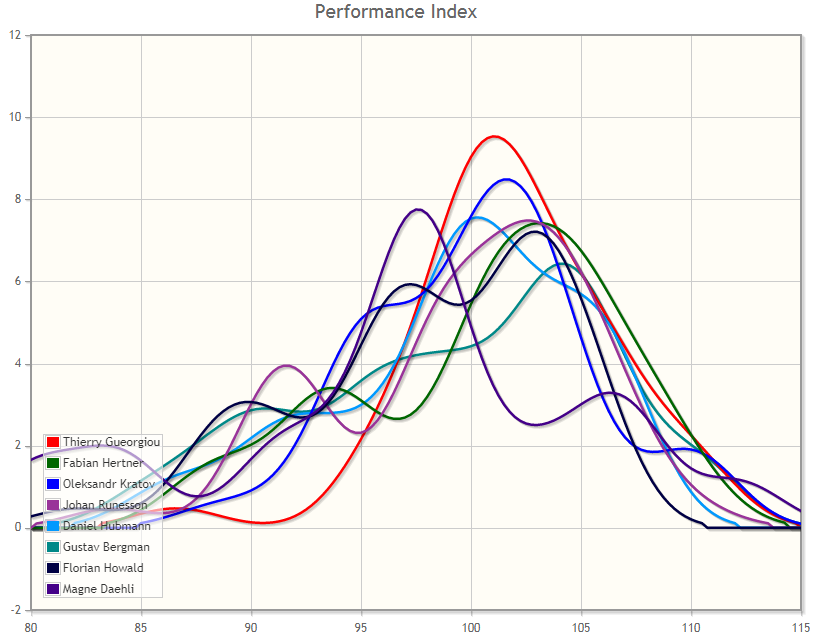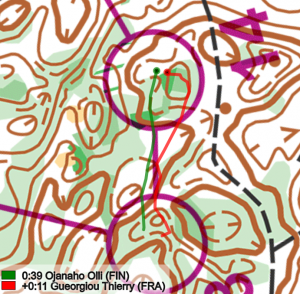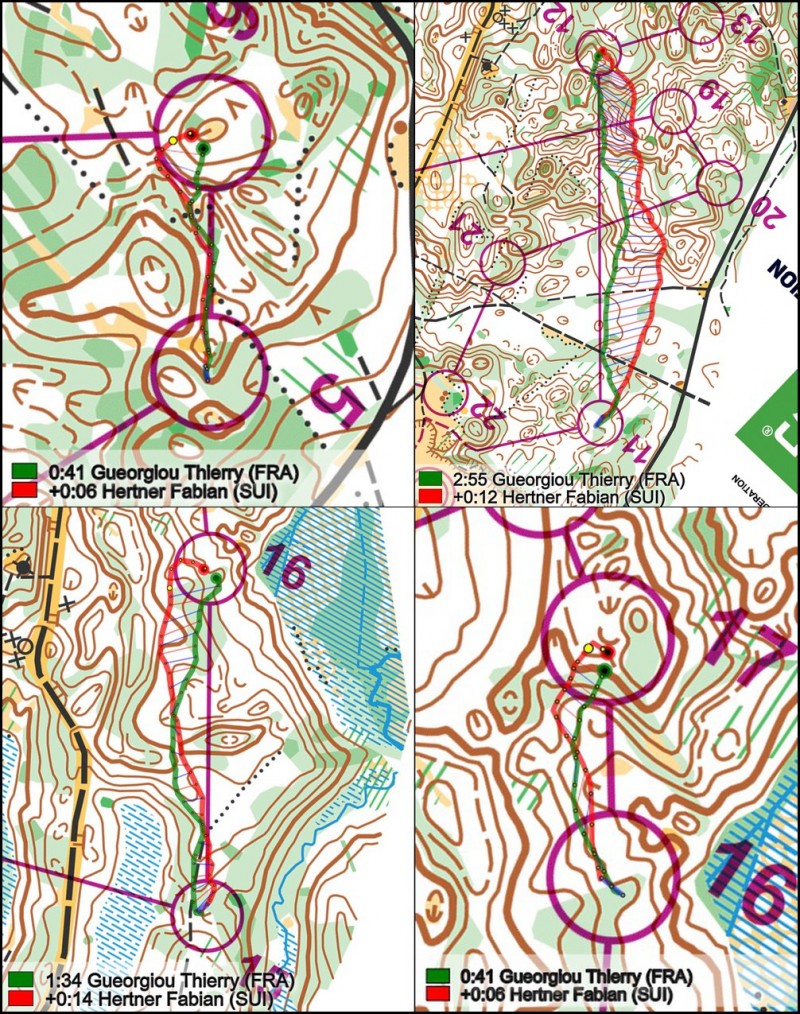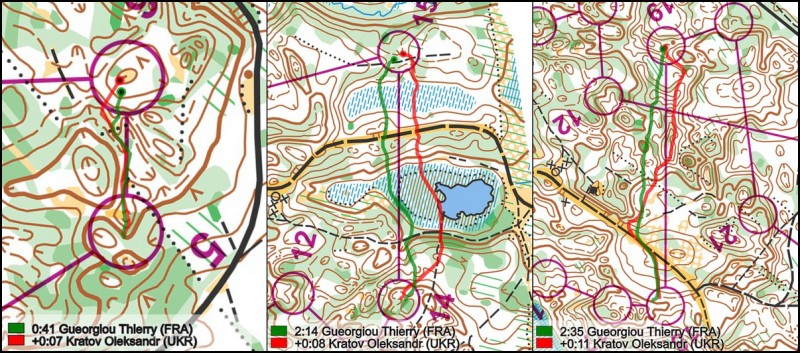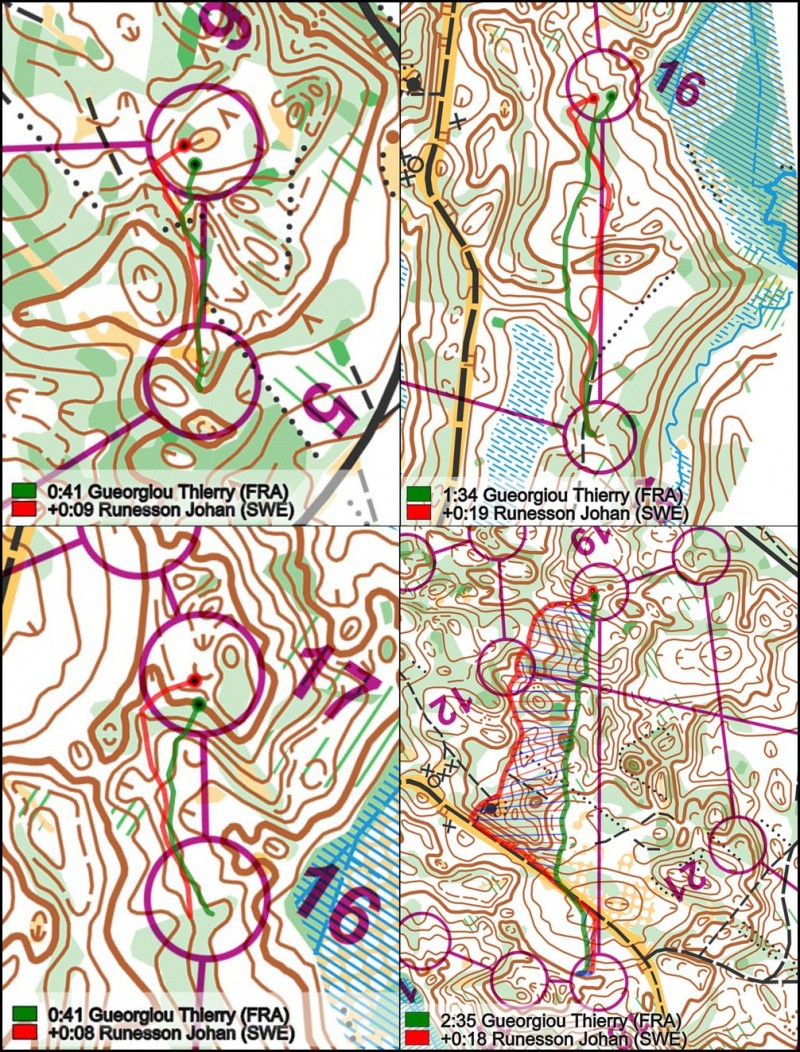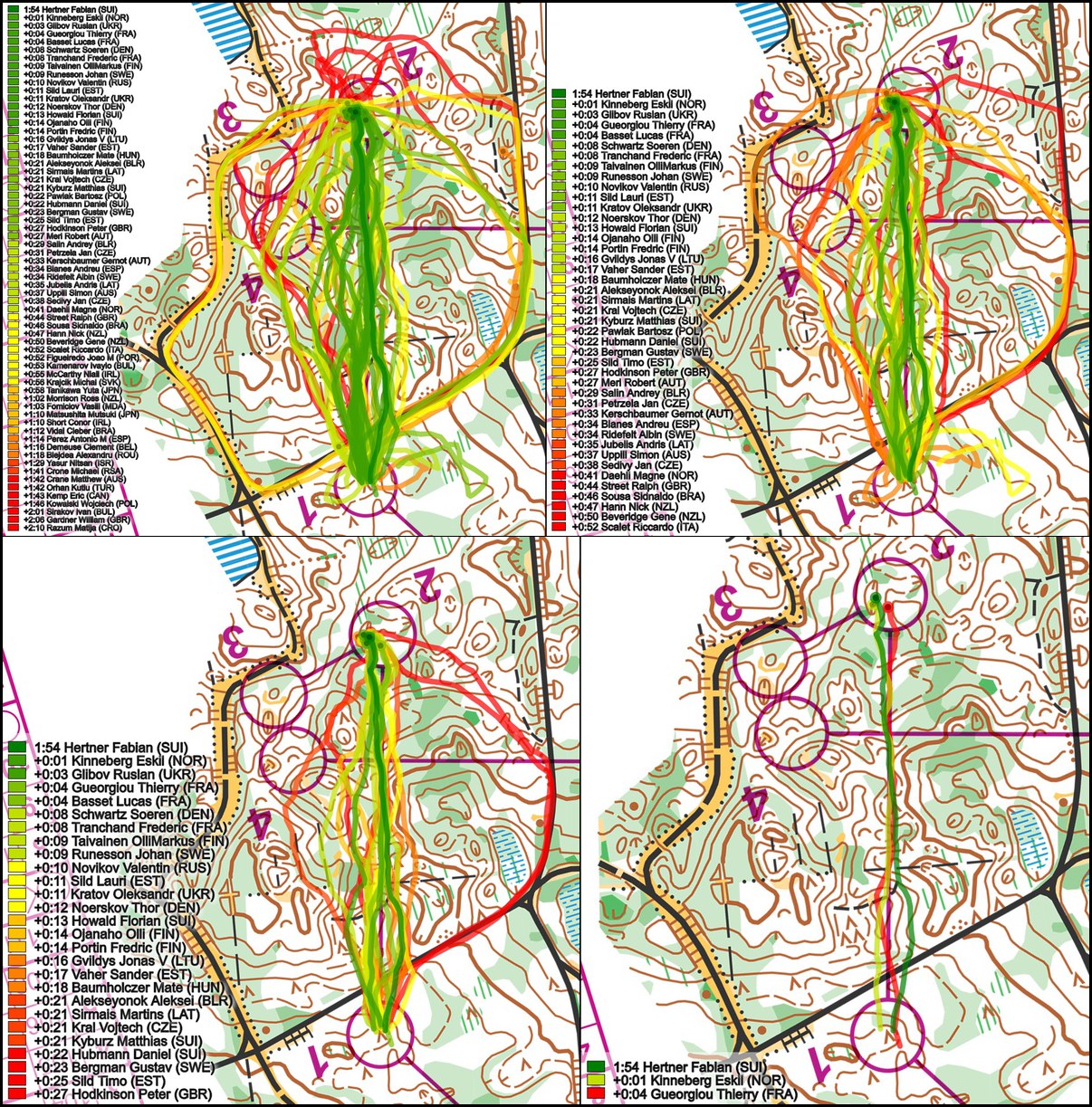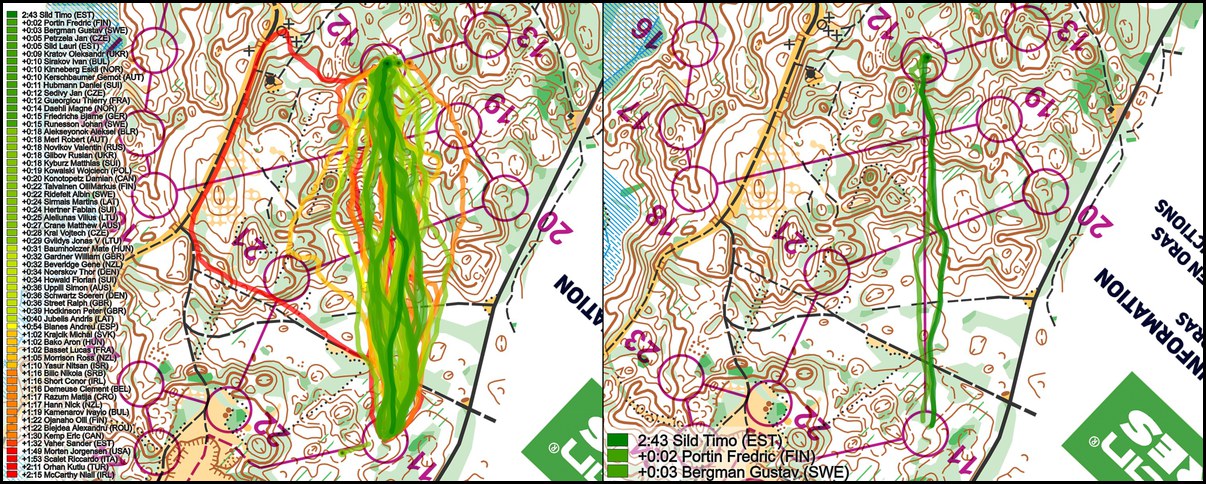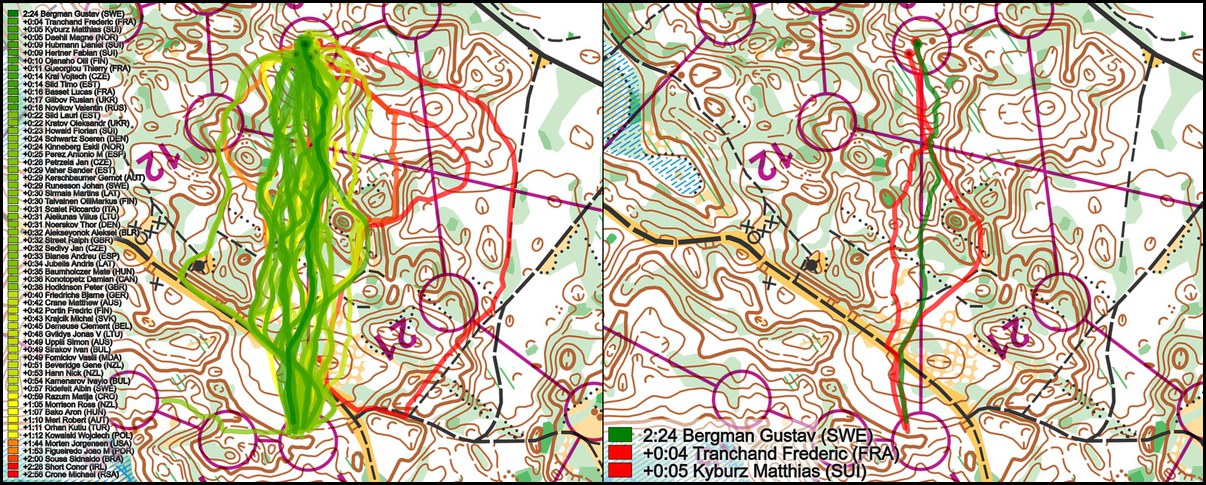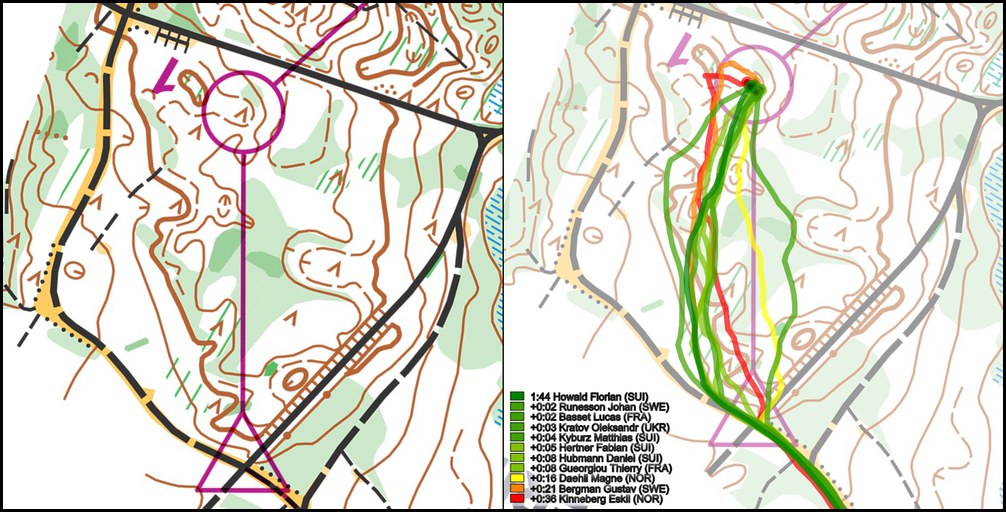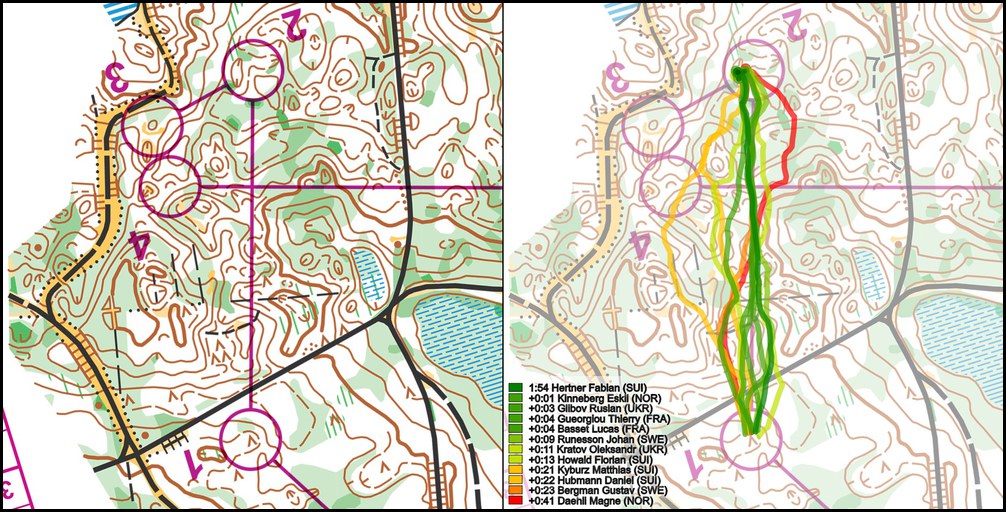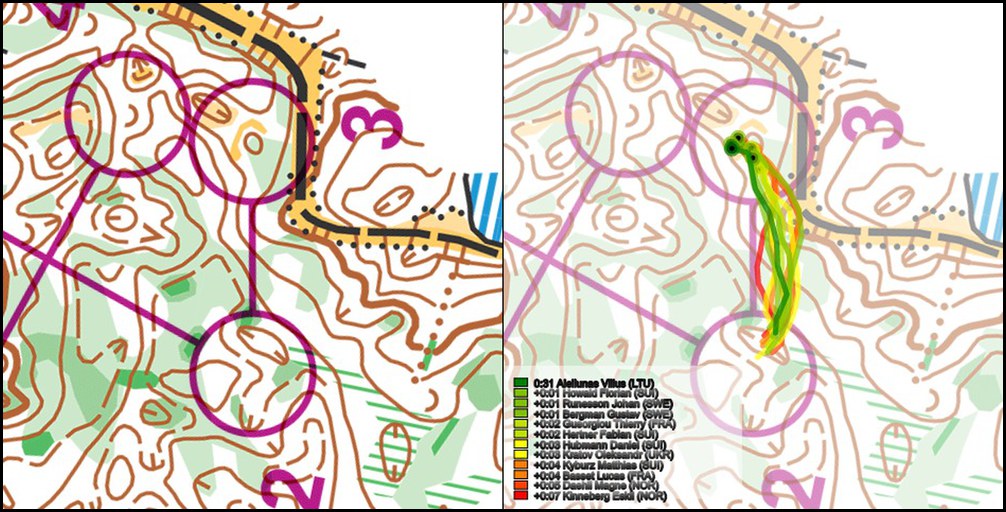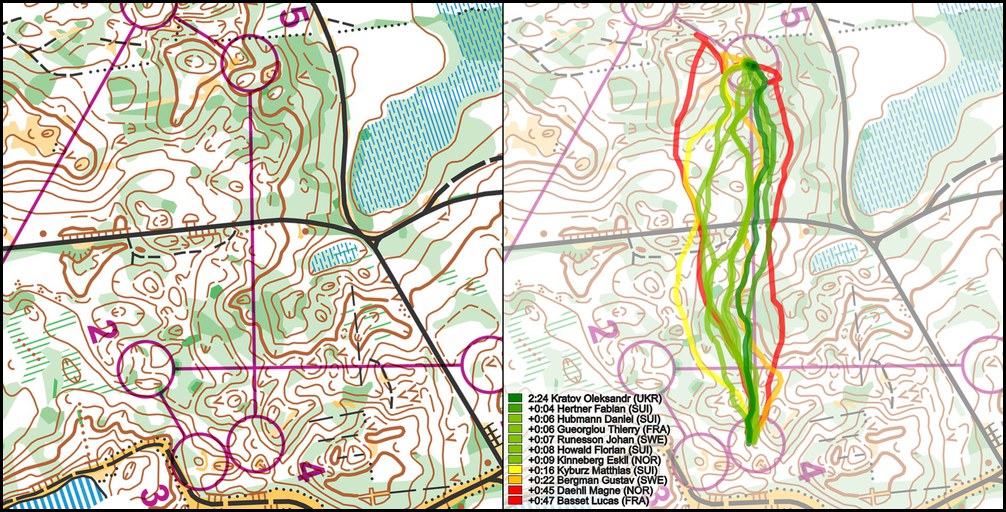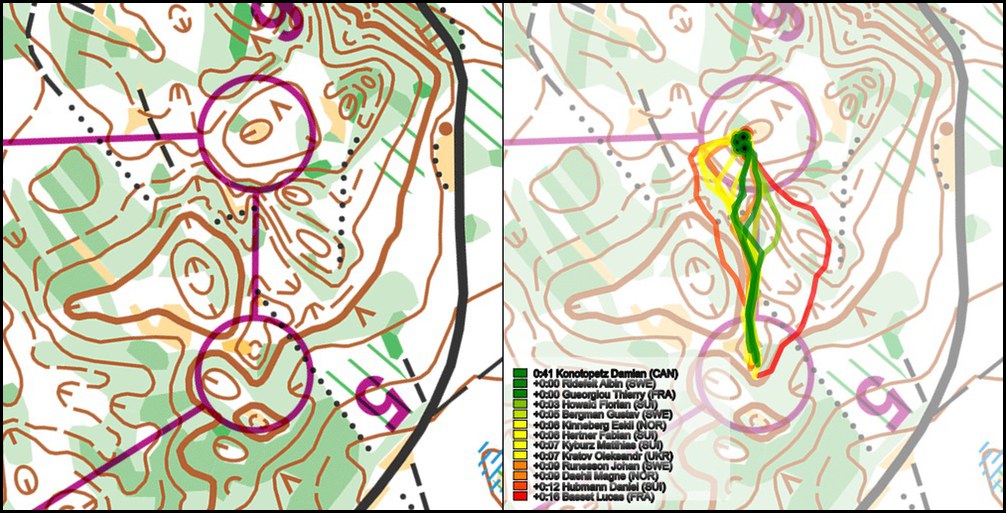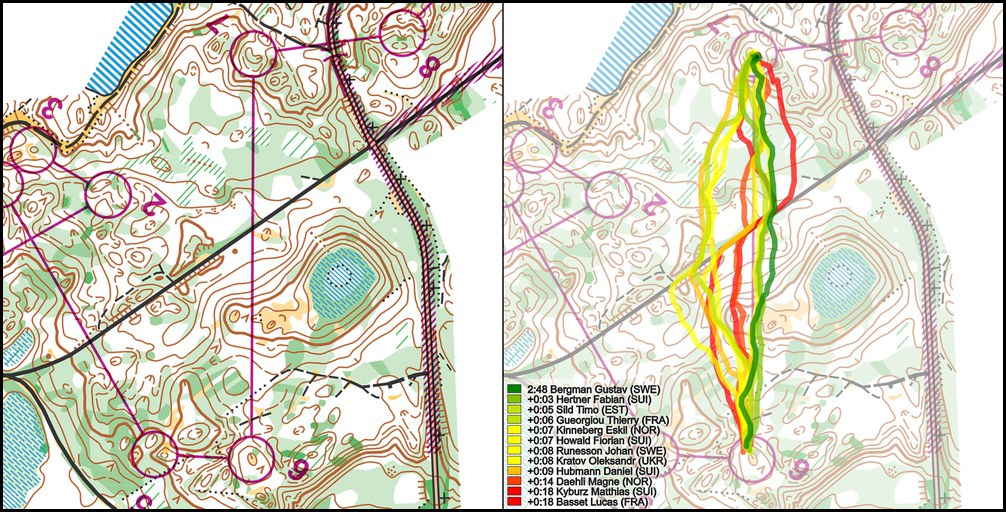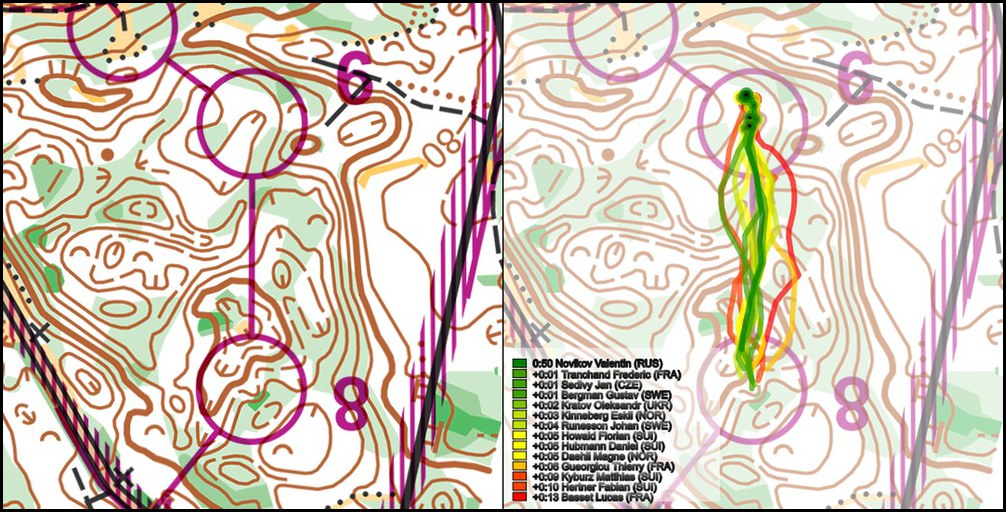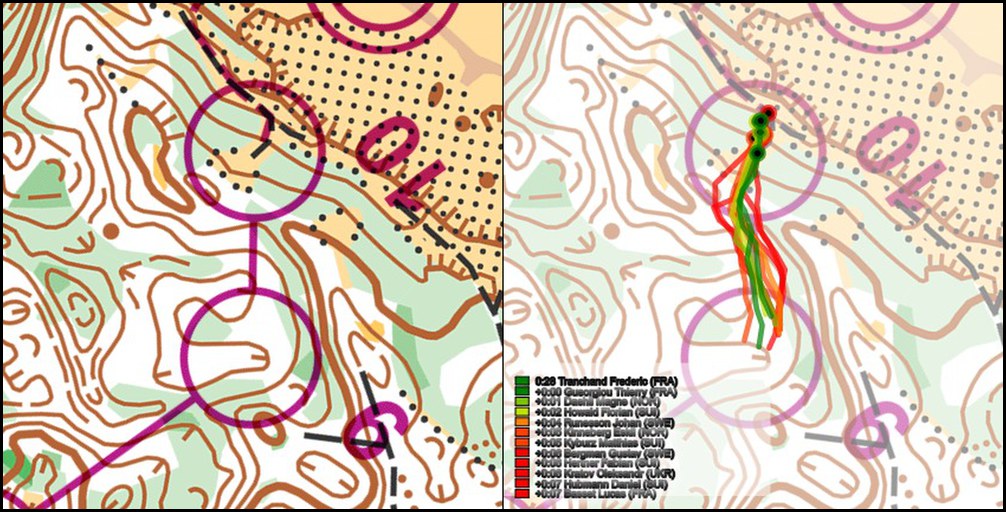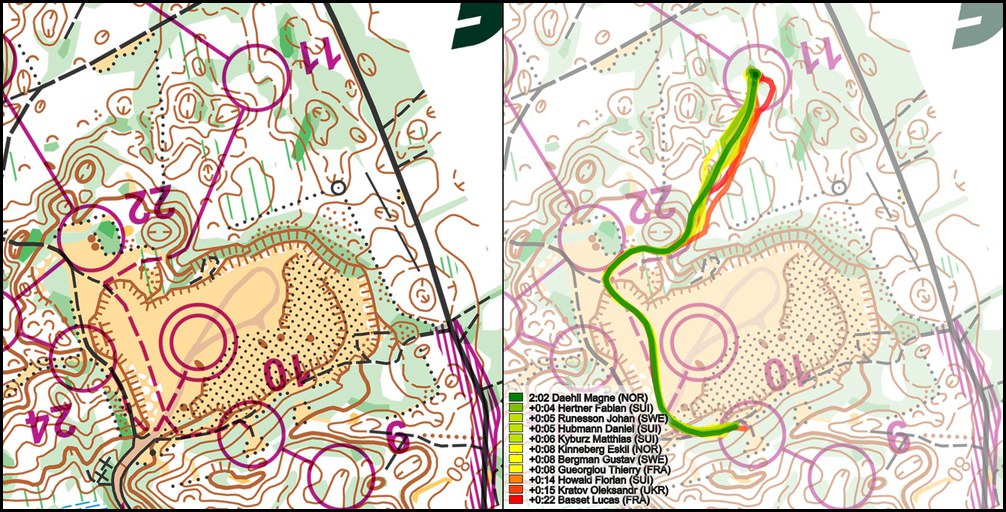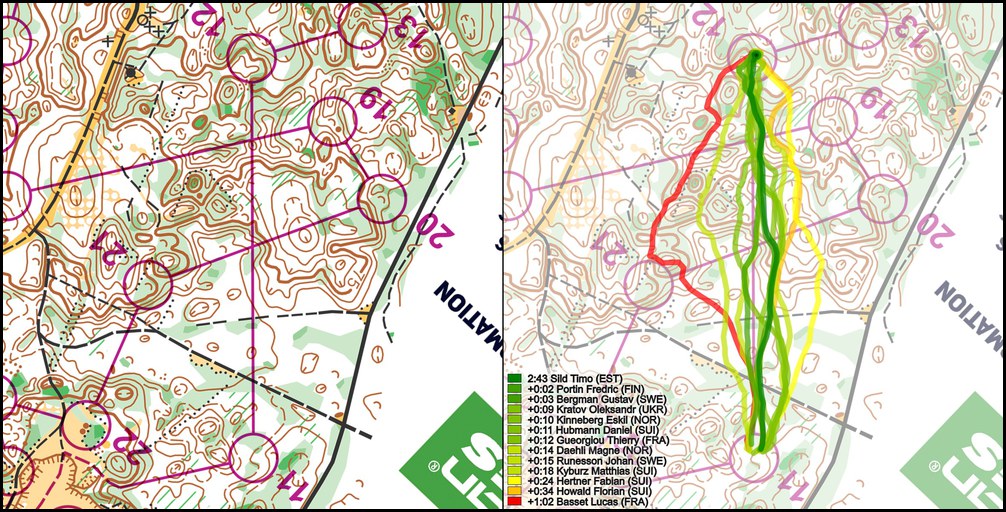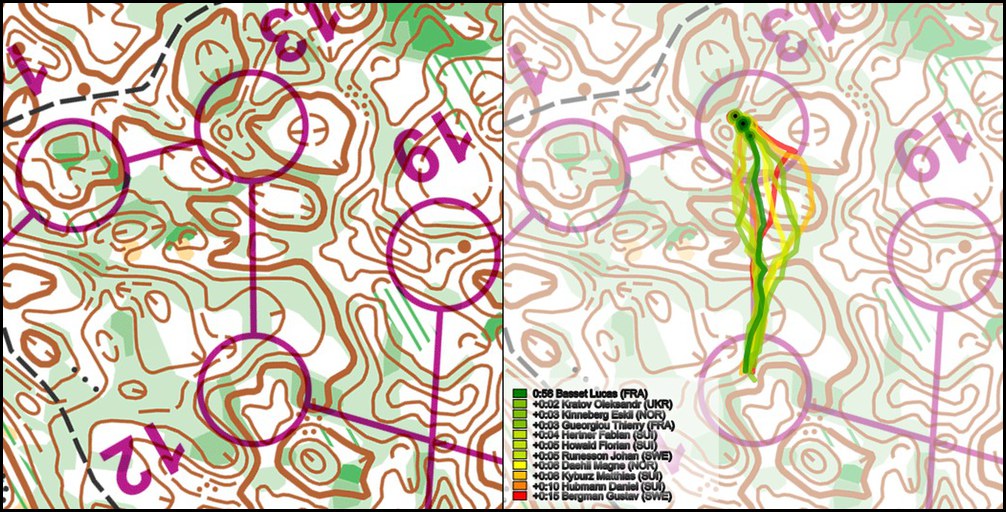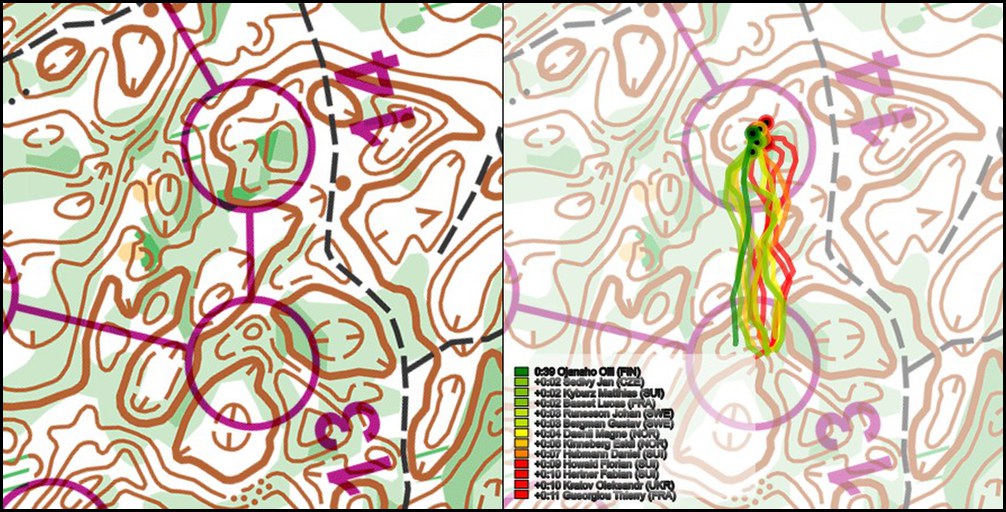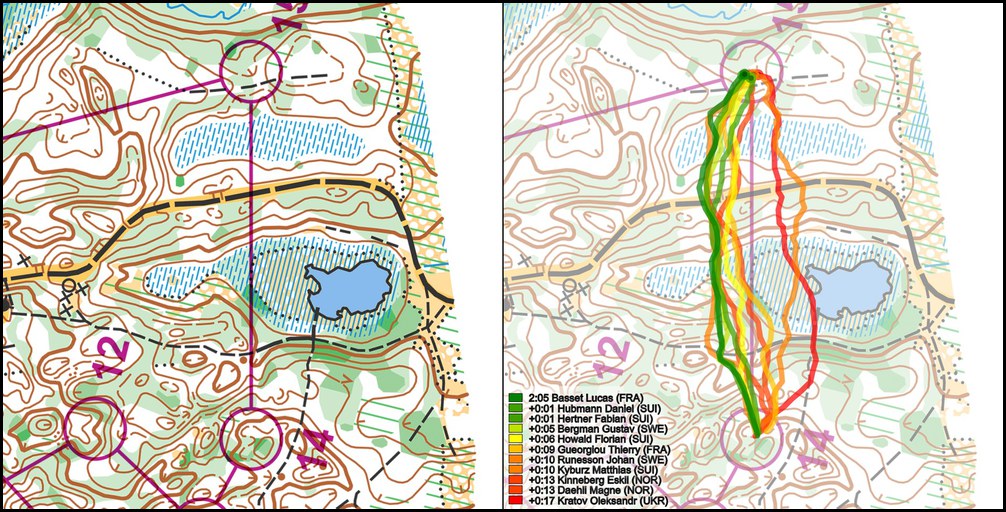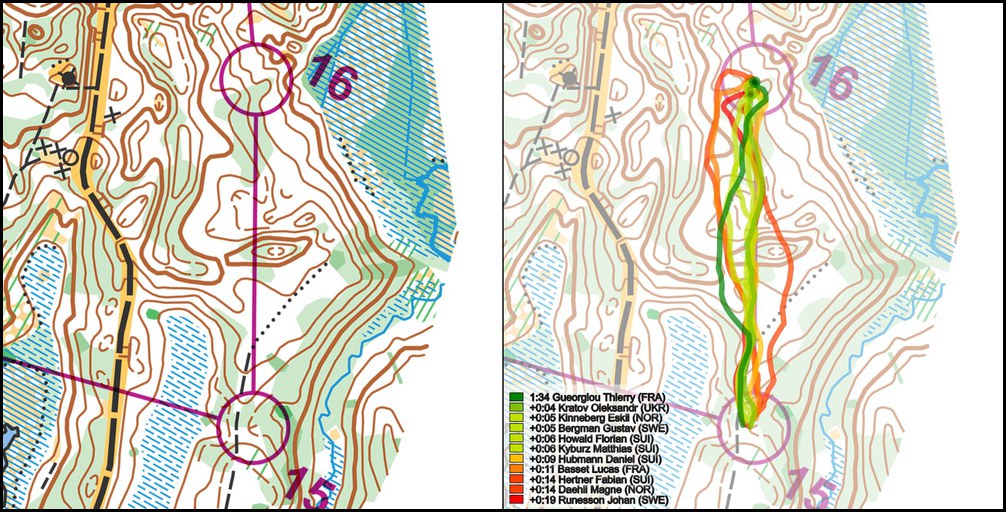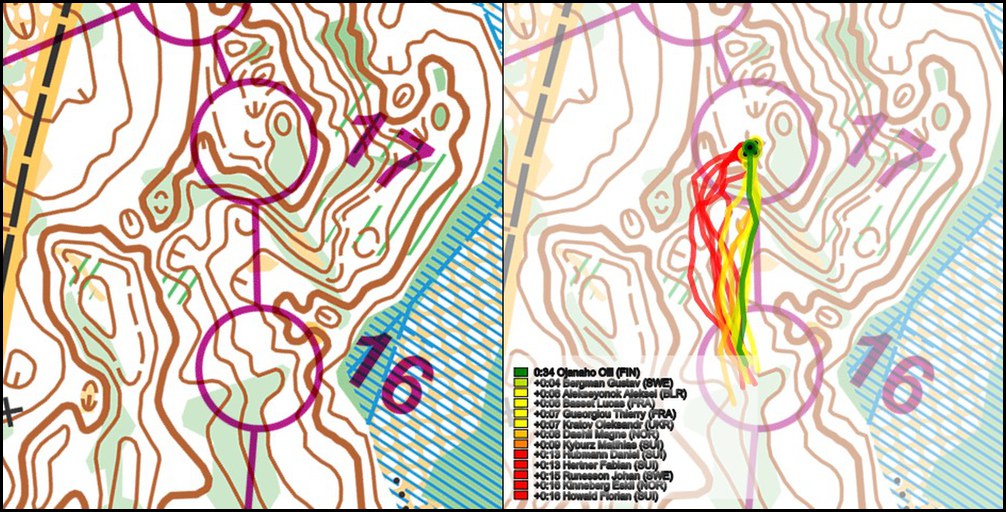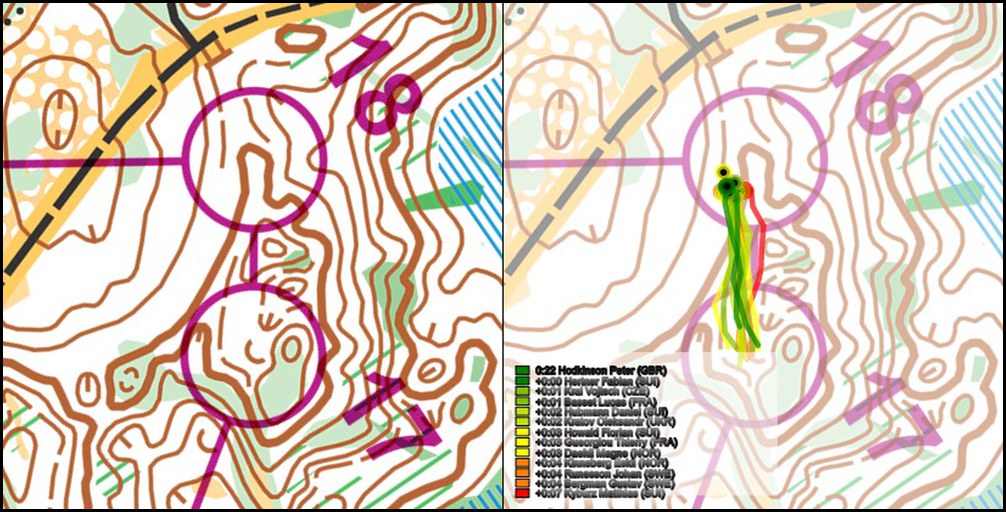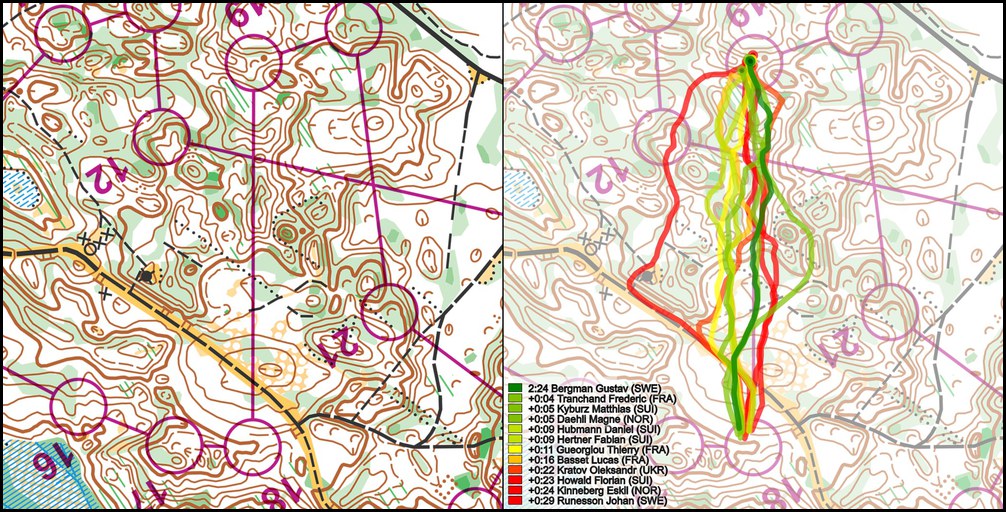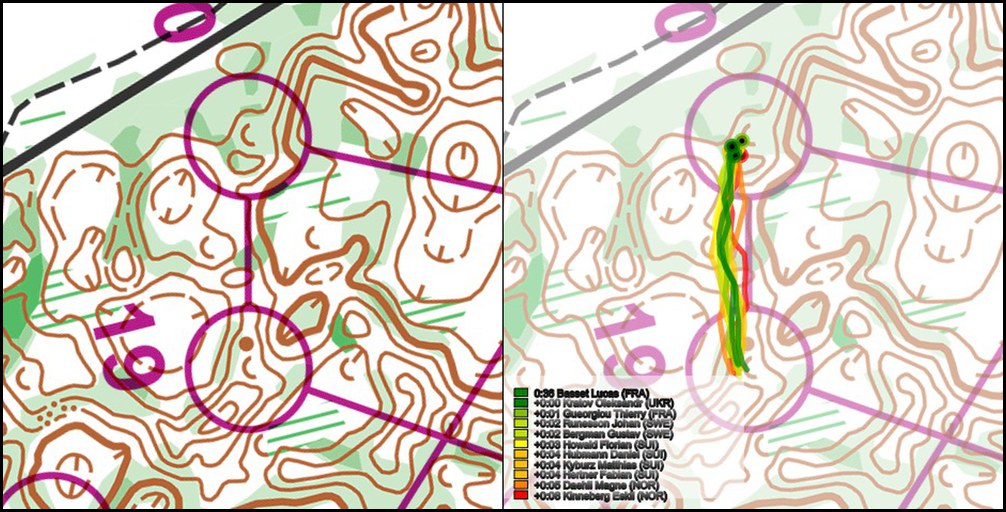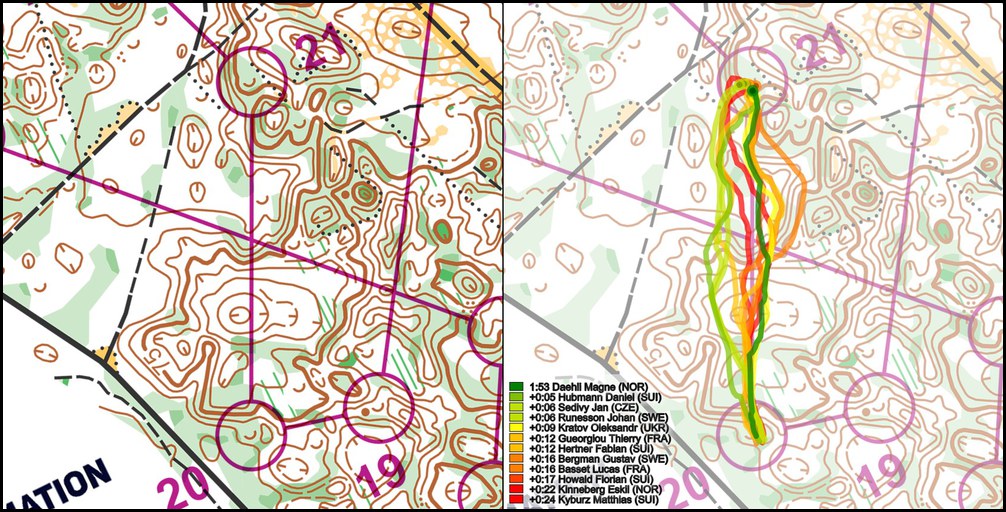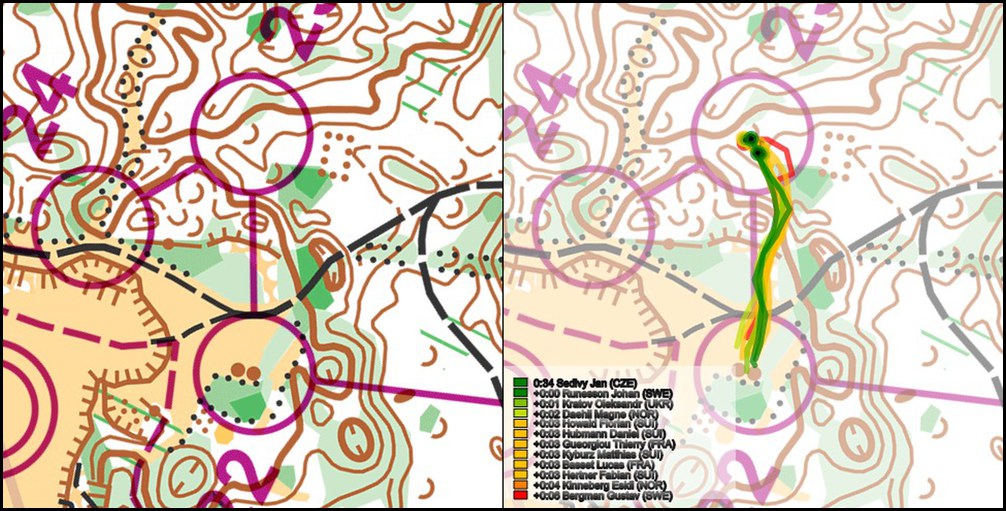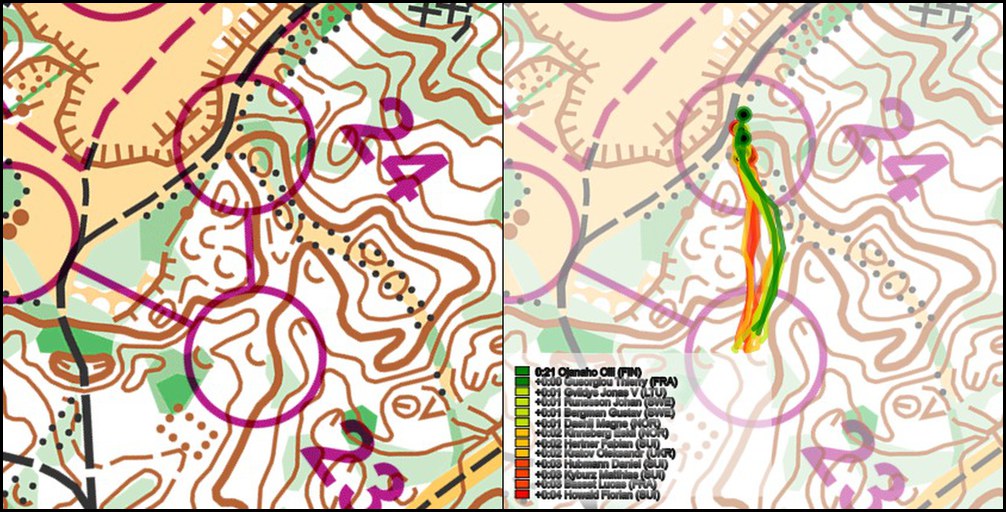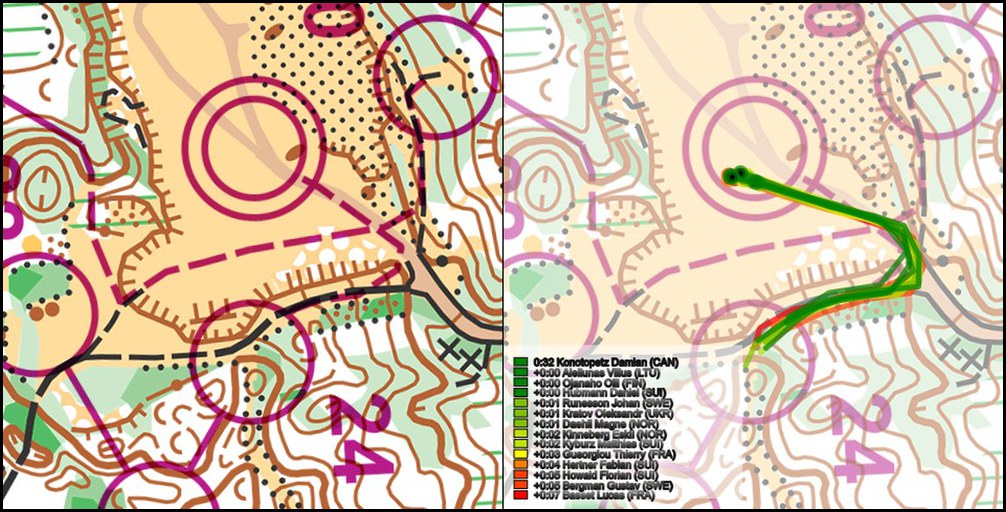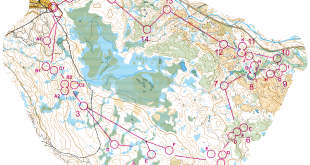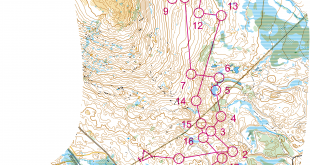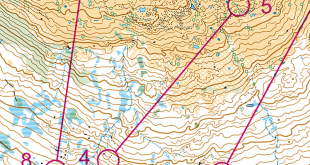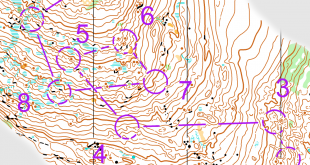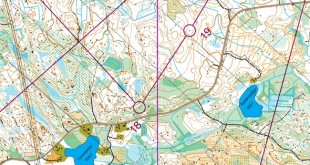Thierry Gueorgiou (France), Fabian Hertner (Switzerland) and Oleksandr Kratov (Ukraine) had a tight battle for victory on a very technical course in the Men’s World Orienteering Championships Middle distance 2017 in Estonia.
The course was a very technical middle distance course in a terrain with relatively low visibility, variable runnability and many contour-details (see complete course here and maps and results article here). This was a course which is a perfect fit for the skillset of Gueorgiou and Kratov – two athletes who have pushed the boundaries for what is possible with respect to navigation in very technical terrain the last years. The King of Middle is back, 6 years after his last WOC Middle title on homeground in France. The terrain in France required some of the same skillset as the course this year – even if the terrain itself was very different.
Tip: If illustrations in this article are too small to read clearly, rightclick and choose “Open in new tab” or “Open in new window” to be able to zoom in on them.
Race development at a glance
This analysis looks into who had the speed to win the race – and why Gueorgiou could climb to the very top of the podium at the end of the day with a Gold medal around his neck and a big smile on his face. As the illustrations and analysis below will show, Fabian Hertner, Johan Runesson, Gustav Bergman and Magne Dæhli had the required speed to beat Gueorgiou on a perfect day, but of these Hertner had fewer timelosses, and slightly higher speed.
The above splits graph (click for larger version) shows the race development between the top runners at a glance. After 15 of 24 controls Gueorgiou was in second place, one second behind Hertner and had Johan Runesson and Oleksandr Kratov within 10 seconds behind. Then Gueorgiou decided the race between control 15 and 19 by delivering a perfect technical performance in an area were many others struggled – including Hertner, Runesson and Kratov. Here Gueorgiou pulled away from Hertner, Runesson and Kratov by delivering a close to perfect technical performance, and never let them get close again.
Others like Magne Dæhli, Gustav Bergman, Daniel Hubmann and Matthias Kyburz performed well between control 15 to 19, but lost the race already in the first part of the course – many struggled at control 1, 2, 5 and 6, some also at 7 and 8. Magne Dæhli – known as a slow starter – was 1:47 behind at control 7, and then beat Gueorgiou with 6 seconds on the last 2/3 of the course. Gustav Bergman had a similar race development; at the 5th control he was 54 seconds behind – in the finish he had reduced the gap to 48 seconds. Daniel Hubmann was 36 seconds behind at control 7 – and then only lost 10 more seconds on the last 2/3 of the course. Reigning champion Matthias Kyburz ran nearly equal with Gueorgiou between control 8 and 20, but had already lost 1:20 at control 8 and lost even more in the last part of the course.
Other runners with good performance are included in the below splits graph. These include Florian Howald who was only a second behind Gueorgiou at control 10, but then lost steadily from there to the finish – in the end finishing 80 seconds behind. Eskil Kinneberg lost 40 seconds to the first control, but then had equal performance with Gueorgiou until control 14, and then lost more time in the last part of the course. Lucas Basset had a very good start before doing a major mistake at control 5. He then had a bad period, but from control 12 to the finish he was again close to Gueorgiou’s level. Finally Ruslan Glebov ran very well the first 4 controls, then missed two minutes on control 5 and 6, and run well until control 15 before losing time again in the last part of the course.
Who had the speed to win?
[Note: You can skip this section and jump directly to the GPS-analysis if you don’t want all the details]
The performance index is a good tool to understand who has the speed to win. Looking at the performance index, Thierry Gueorgiou has a beautiful curve with a single, high peek – indicating a very consistent technical performance (there is just one small bump off the centre, corresponding to control 14 at 85%, more about that below). Athletes who have the main peak higher to the right have had better relative performance (typically higher speed) in significant parts of the course. Here we see that Fabian Hertner, Johan Runesson, Gustav Bergman and Magne Dæhli have major parts of the peak further to the right than Gueorgiou – but they did not manage to hold this performance over large enough parts of the course. All others in the competition perform at a lower level.
Gueogiou: Very close to perfect technical performance
Gueorgiou did not have the highest speed in the field, but his orienteering was the most consistent – the only significant timeloss to be found on his route is a small detour at control 14 (see comparison with best split time of Olli Ojanaho below) which cost him 7-8 seconds compared to normal performance, probably due running around some fallen trees. Many others lost time in this order at this control though.
Hertner: Highest speed, maybe a bit too high risk?
Hertner was 25 seconds behind Gueorgiou at the end of the day, with small 5-15 seconds time-losses on controls 6, 12, 16 and 17. Hertner did have higher speed than Gueorgiou (either through higher running speed or due to not reducing speed enough in order to reduce risk), so finding the 25 seconds the Swiss is behind is not too difficult – but it is not all in one control.
Three of these the timelosses are direction mistakes where Hertner comes too far to the left and has to take corrective action when approaching the control. The last is a non-ideal routechoice where Hertner does not go as direct as Gueorgiou (to control 12) where Hertner loses some time towards the control, either due to getting stuck or due to relocating. Hertner also loses a few seconds to control 9 and 14, but these are minor timelosses.
See split comparison graph Hertner vs Gueorgiou here.
Kratov: Excellent technical performance – not the speed to win
Oleksandr Kratov was clearly the one of the medalists with lowest speed – which is not surprising given the injury trouble he has had the last 6 months with only being able to run 20% of his training.
Runesson: Lost gold between control 15 and 19
Interestingly, Runesson also loses time on control 6, 16 and 17 – and his mistakes look like a carbon copy of Hertner’s. Three small direction mistakes where Runesson comes too far to the left and has to take corrective action when approaching the control. Runesson’s last significant timeloss is also due to a non-optimal routechoice where Runesson chooses to go around rather than direct like Gueorgiou – to control 19.
Runesson’s timeloss to Gueorgiou between control 15 and 19 is 46 seconds – which is actually exactly the time Runesson is behind Gueorgiou in the finish. Thus the comparison between Runesson and Gueorgiou shown below sums up the difference between gold and 4th place.
See split comparison graph Runesson vs Gueorgiou here.
A detailed look at some of the longer legs
Leg 1-2
The athletes solve this leg in many different ways, but the fastest way to solve it for the most skilled seems to be going straight along the line using your compass and reading the map enough to not lose control, like Hertner, Gueorgiou and Kinneberg.
Leg 11-12
Again a longer leg, and again the straight line see to be the best.
Leg 18-19
This is a long leg where it is not that clear that you have to go straight – although straight is the fastest run here. Note however that both Tranchand and Kyburz instead navigate their way to the control.
Leg-by-leg illustrations
Click on the illustration to view them bigger. For each leg the routes of Top10 plus the fastest three on the leg are shown.
 World of O News
World of O News
